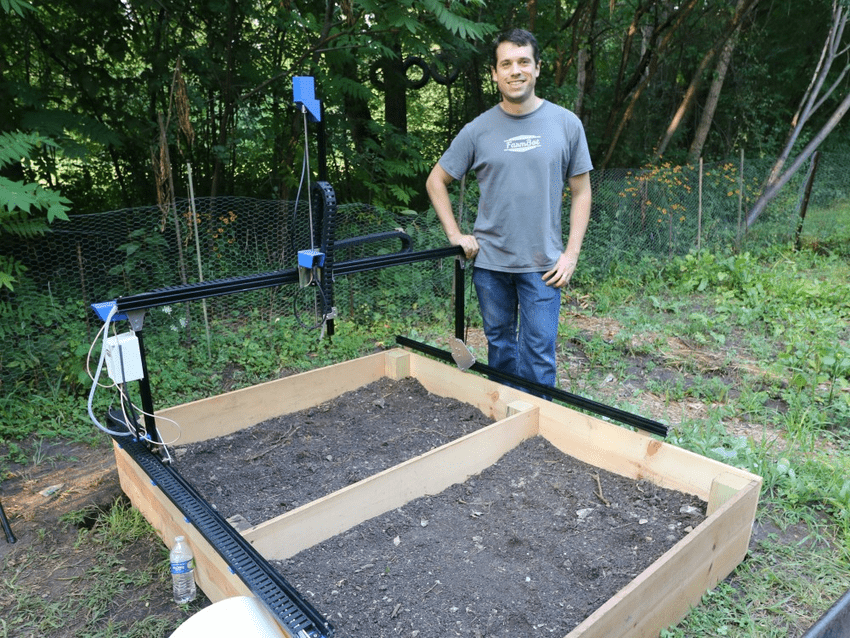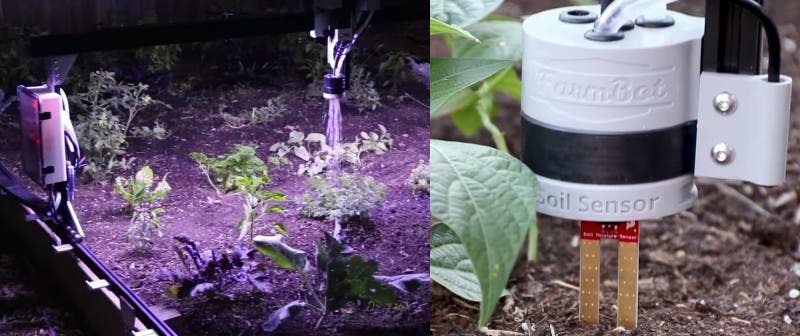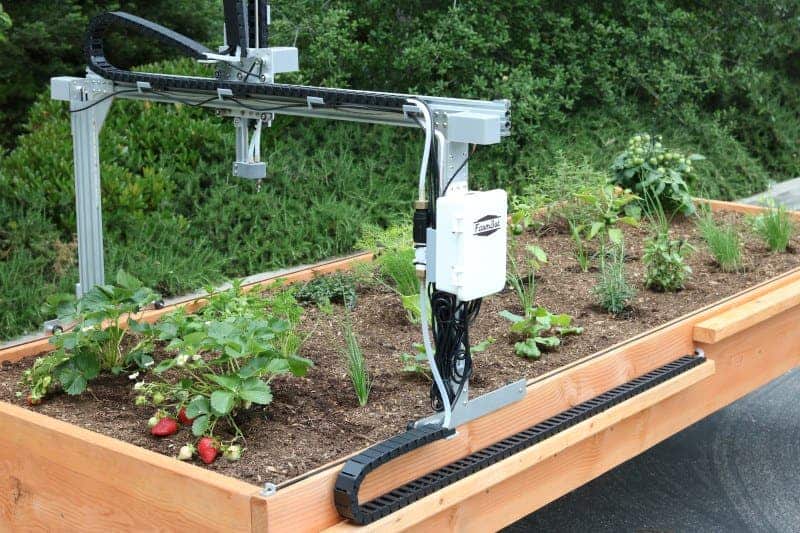
If you’ve always wanted to grow your own fruits and veggies but could never quite make the time for it — technology is here to rescue you.
At first glance, technology and farming don’t go hand in hand, but that’s old school thinking. In this day and age, technology and farming are a perfect match. With cheap sensors, simple phone apps, and available equipment, you can build your very own farming robot.
FarmBot, enter the stage
Give it power, water, and WiFi, and it will take care of the rest. FarmBot can plant, water, weed, and monitor the soil and plants with an array of sensors. All you need to do is harvest the produce once it’s done.

FarmBot is an open-source robot developed by the eponymous company. It runs on custom, extensible tracks, and uses game-like open-source software.
Everything is customizable and adaptable. You design your patch and drop plants onto a virtual map of your plot. The seeds are spaced automatically, and you can apply different growing plans. It can be controlled a phone, tablet, or computer.

FarmBot is an example of precision farming — a series of tools and techniques that enables farmers to optimize their resources and increase yield, while also being more sustainable. For instance, a soil humidity sensor that lets you know when it’s time to water the plants, or a nutrient detector that lets you know which areas (if any) need any more nutrients.
Back in the day, precision farming would require heavy and expensive machinery. But recently, the miniaturization of sensors, coupled with the advent of smartphones, internet, and apps, has made it much more accessible. FarmBot is taking that idea and applying it — no green thumb required.
The best part about it is that it’s open-source, which means that everyone from the community can customize it, adapting it for various setups and equipment.
The catch
I like the FarmBot idea. I really do — it’s great! But boy, it’s expensive! After a successful Kickstarter campaign, the design is sold for over $3,000 — which for a patch this size, likely means the patch won’t repay the cost for years (if ever).

If you’re buying something like this though, you’re probably not doing it to earn a buck. There’s a distinct pleasure in eating food that you’ve grown, and the pleasure is arguably even greater when the robot does most of the work for you.
Still, at this price, the likely target audience is restricted to well-off urbanites. However…
The counter catch
As previously mentioned — what’s really great about it is that it’s open-source. The folks at FarmBot have published detailed documentation on how to assemble and get the FarmBot working and augment or customize it to your needs.
“This opens up a world of opportunities for students to explore fields like coding, makers to modify their FarmBot with 3D printing, and scientists to take full advantage of the platform,” the website reads.
In other words, for someone with some maker experience (or simply who’s willing to dive into this world), you can build your own robot. In fact, there are plenty of resources online instructing you how to build a smart farming system. Here are just a few examples. The FarmBot itself uses Arduino and Raspberry Pi — two favorites of DIY makers.
Ultimately, this could be useful for a number of different communities, whether it’s students who would like to learn a practical application for coding or electronics, people who are really into growing their own produce, or those who just want to add a little pizzazz to their farming — to give just a few examples. Even for those whose livelihoods depend on farming, systems like this one can make a big difference, helping them manage their land a bit more effectively.
So, if you like FarmBot and can afford one, that’s great, go for it! If you can’t, you can still get into the world of maker precision farming with a far smaller investment. You can probably get started for around $100, and then decide if you want to explore it further.


